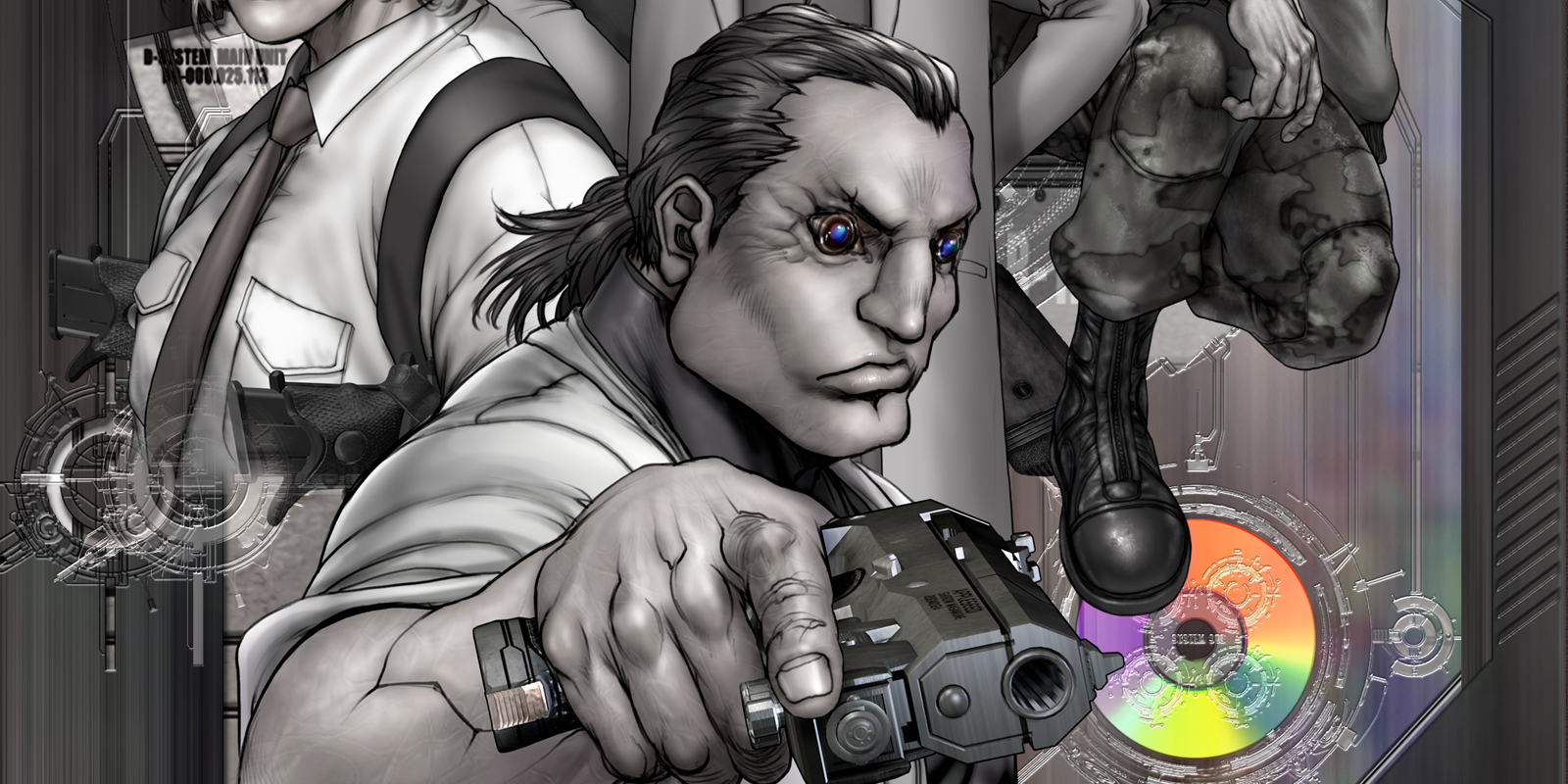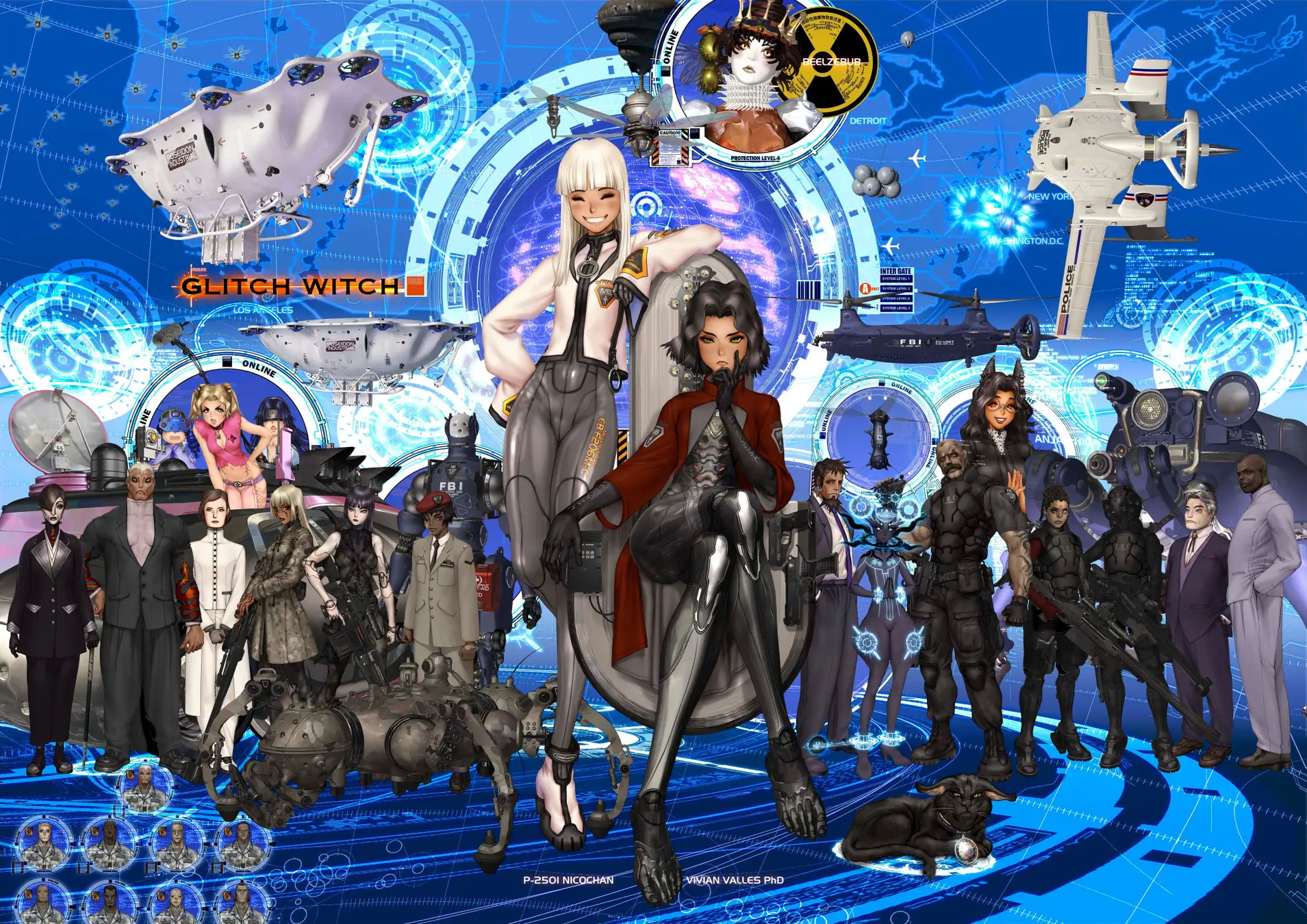
Original author Shirow Masamune talks about “Ghost in the Shell” #03
Text, Young Magazine Editorial DepartmentAlthough it isn’t unknown for Shirow Masamune to explain his works in separate books or companion pieces, he has very rarely taken interviews on his work Ghost in the Shell. While he spoke with director Mamoru Oshii for “Weekly Young Magazine” in the lead-up to the premier of the 1995 film Ghost in the Shell, that conversation centered on the film and sidestepped the manga. Even when featured in Weekly Young Magazine’s “Red Pig” column, the interview centered on work as a manga author, only lightly touching on his actual creations at the end. He was later interviewed for Glénat SA, a French publisher, but the interview was a Q&A on expression and drawing techniques that did not engage with manga stories.
In other words, this is the first in-depth interview with Shirow Masamune about the manga the Ghost in the Shell. From the factors that spurred him to write the manga to its focus on cutting-edge technology, we got to speak to the author about his works, 30 years after the fact(in a series of three interviews).
#03 "The Game of Life" in Both the Past and Future
-You’ve incorporated countless scientific and technological developments into entertainment. Are there any new technologies you have your eye on now?
Shirow Masamune(“Shirow”): I’m keeping an eye on research they’re doing at the Institute for Molecular Science in Okazaki, Aichi prefecture. They’re Japanese researchers working on quantum computers. Anyone who’s interested should check out the back catalogue of the Japanese edition of “Nikkei Science” for June 2023. They had an article on it.
-Will you be using any ideas from that in your work?
Shirow: This is entirely different in that it’s completely made up, but I have story ideas using hooks like the emergence of the “ultimate version” of a 3D printer – where you organize molecules in grids of light, placing them anywhere. Or a story in another world, with magic circles structured in grids of light and operator symbols, using vibrating ring lattices. I’m not sure when I’ll get a chance to work on them, though… I wouldn’t like it if some things ended up unfinished, so I’ve been thinking recently about how to preserve them. The first half of the story of the Puppet Master – until he begins to want to merge with Motoko Kusanagi – is being produced by Kadokawa with Pandora in the Crimson Shell: Ghost Urn. But the second half of that story will be Glitch Witch, and we made progress on a video version of it in 2008 and 2020. But the project has gone dormant again as of 2023, and it still hasn’t made it into a state that I’m ready to share with the world.

-Time will eventually catch up with and move past your overarching universe as you work on that kind of thing.
Shirow: Right. Several technologies already have. And that’s not because of how I thought; it’s just that technicians felt that the world should develop in some way and worked hard to change the world. They share science with the world at large, and I see it and think, “That’s fascinating, I should use it in a story.” That doesn’t come solely from within me, and I feel like I’m not good enough to make it all into entertainment.
I pushed the original manga’s theme for the entire overarching universe toward “providing the senses of wonder and universality encompassed within probability and logic.” The themes aren’t the “relatability and universality of tragedy and emotions,” which are typically popular. There also aren’t any emotional payoffs or lessons in a literary sense – those aren’t themes I followed. If I had to say, the theme is more what The Game of Life would give as an answer to the question of “What will become of humanity in the future?” And I work to make things for the people who are into that, so we can all enjoy them.
-We made this website since so many people find your detailed worlds and characters appealing, and creators have made new The Ghost in the Shell works aside from your tales so far. What’s your outlook on the ones that have seen media releases?
Shirow: For the anime works, I feel like each director brings their own themes, vectors, focuses, and sense of beauty to the series. They also feel like products of The Game of Life to me, in that they respond to the original manga as answers rather than tracing its course and recreating it. They re-confirm and reconstruct efforts and formulas from it and explore the relatability and universality of its lyrical elements as a work of entertainment. They keep the right distance from it, and so there’s a dialogue, but they have their own diversity and resonance.
For games, the PS1 game is based on the original manga, and the PS2 and online competitive games are based on the anime Ghost in the Shell: Stand Alone Complex. The various short stories and anthology comics each draw from different series, so they have their own diversity. And that means that they form something like a family tree, meaning each is fun in its own way.
(End)
SHIROW MASAMUNE
Manga author and illustrator. Began working as a manga author and illustrator in 1982. He went on to create works including prominent examples Appleseed, Dominion (starting 1984, Seishinsha), The Ghost in the Shell (starting 1989, Kodansha), and Pandora in the Crimson Shell: Ghost Urn (starting 2012, Kadokawa). His primary works as an anime creator include Black Magic M-66. He is also active in a variety of other fields, including gaming and art collections.

